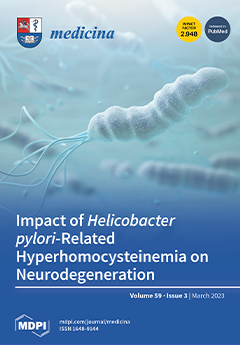Background and Objectives: Since the first cases of multisystem inflammatory syndrome in children (MIS-C) in April 2020, the diagnostic challenge has been to recognize this syndrome and to differentiate it from other clinically similar pathologies such as Kawasaki disease (KD) and toxic shock syndrome (TSS). Our objective is to compare clinical signs, laboratory data and instrumental investigations between patients with MIS-C, KD and TSS.
Materials and Methods: This retrospective observational study was conducted at the Children’s Clinical University Hospital, Latvia (CCUH). We collected data from all pediatric patients <18 years of age, who met the Centers for Disease Control and Prevention case definition for MIS-C, and who presented to CCUH between December 2020 and December 2021. We also retrospectively reviewed data from inpatient medical records of patients <18 years of age diagnosed as having KD and TSS at CCUH between December 2015 and December 2021.
Results: In total, 81 patients were included in this study: 39 (48.1%) with KD, 29 (35.8%) with MIS-C and 13 (16.1%) with TSS. In comparison with TSS and KD, patients with MIS-C more often presented with gastrointestinal symptoms (abdominal pain (
p < 0.001), diarrhea (
p = 0.003)), shortness of breath (
p < 0.02) and headache (
p < 0.003). All MIS-C patients had cardiovascular involvement and 93.1% of MIS-C patients fulfilled KD criteria, showing higher prevalence than in other research. Patients with KD had higher prevalence of cervical lymphadenopathy (
p < 0.006) and arthralgias (
p < 0.001). In comparison with KD and TSS, MIS-C patients had higher levels of ferritin (
p < 0.001), fibrinogen (
p = 0.04) and cardiac biomarkers, but lower levels of platelets and lymphocytes (
p < 0.001). KD patients tended to have lower peak C-reactive protein (CRP) (
p < 0.001), but higher levels of platelets. Acute kidney injury was more often observed in TSS patients (
p = 0.01). Pathological changes in electrocardiography (ECG) and echocardiography were significantly more often observed in MIS-C patients (
p < 0.001).
Conclusions: This research shows that MIS-C, KD and TSS have several clinical similarities and additional investigations are required for reaching final diagnosis. All the patients with suspected MIS-C diagnosis should be examined for possible cardiovascular involvement including cardiac biomarkers, ECG and echocardiography.
Full article






